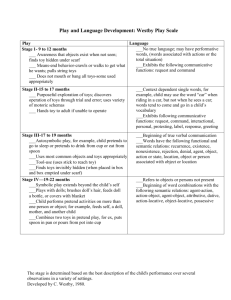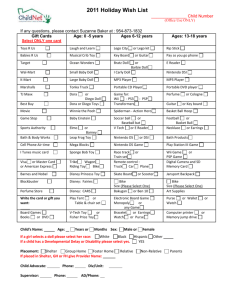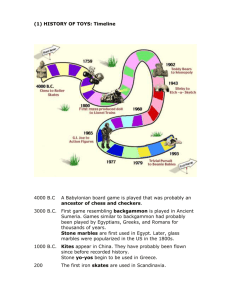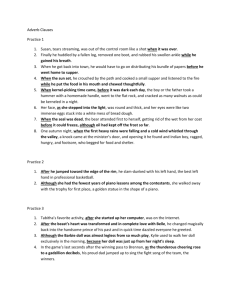Los Angeles Toy Company
advertisement
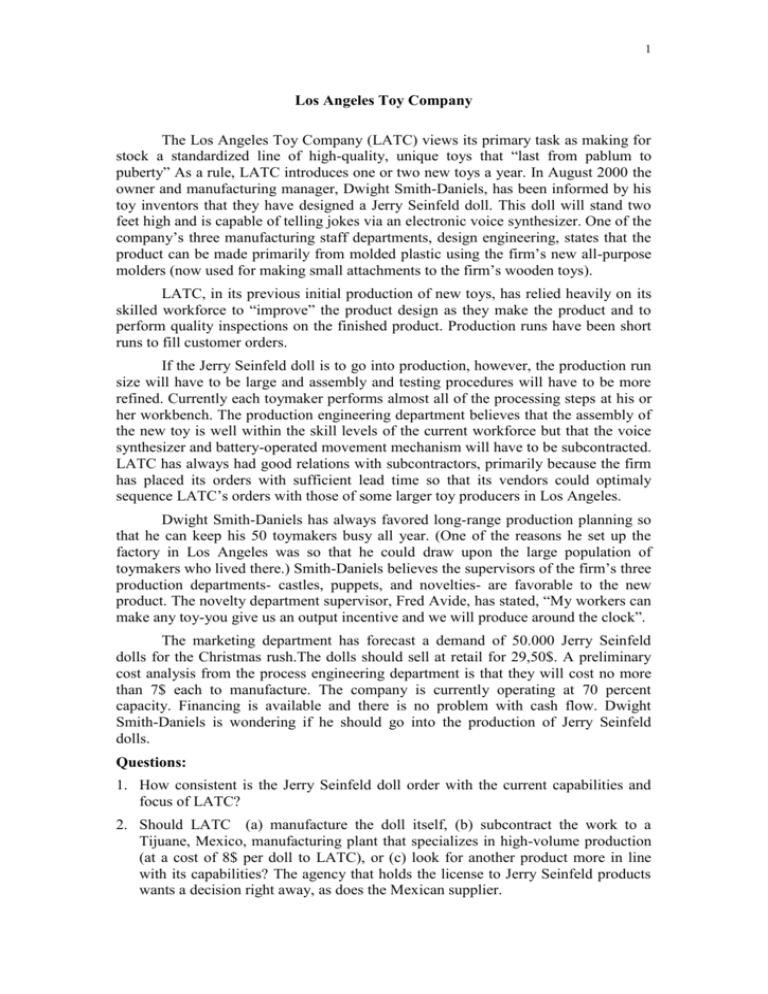
1 Los Angeles Toy Company The Los Angeles Toy Company (LATC) views its primary task as making for stock a standardized line of high-quality, unique toys that “last from pablum to puberty” As a rule, LATC introduces one or two new toys a year. In August 2000 the owner and manufacturing manager, Dwight Smith-Daniels, has been informed by his toy inventors that they have designed a Jerry Seinfeld doll. This doll will stand two feet high and is capable of telling jokes via an electronic voice synthesizer. One of the company’s three manufacturing staff departments, design engineering, states that the product can be made primarily from molded plastic using the firm’s new all-purpose molders (now used for making small attachments to the firm’s wooden toys). LATC, in its previous initial production of new toys, has relied heavily on its skilled workforce to “improve” the product design as they make the product and to perform quality inspections on the finished product. Production runs have been short runs to fill customer orders. If the Jerry Seinfeld doll is to go into production, however, the production run size will have to be large and assembly and testing procedures will have to be more refined. Currently each toymaker performs almost all of the processing steps at his or her workbench. The production engineering department believes that the assembly of the new toy is well within the skill levels of the current workforce but that the voice synthesizer and battery-operated movement mechanism will have to be subcontracted. LATC has always had good relations with subcontractors, primarily because the firm has placed its orders with sufficient lead time so that its vendors could optimaly sequence LATC’s orders with those of some larger toy producers in Los Angeles. Dwight Smith-Daniels has always favored long-range production planning so that he can keep his 50 toymakers busy all year. (One of the reasons he set up the factory in Los Angeles was so that he could draw upon the large population of toymakers who lived there.) Smith-Daniels believes the supervisors of the firm’s three production departments- castles, puppets, and novelties- are favorable to the new product. The novelty department supervisor, Fred Avide, has stated, “My workers can make any toy-you give us an output incentive and we will produce around the clock”. The marketing department has forecast a demand of 50.000 Jerry Seinfeld dolls for the Christmas rush.The dolls should sell at retail for 29,50$. A preliminary cost analysis from the process engineering department is that they will cost no more than 7$ each to manufacture. The company is currently operating at 70 percent capacity. Financing is available and there is no problem with cash flow. Dwight Smith-Daniels is wondering if he should go into the production of Jerry Seinfeld dolls. Questions: 1. How consistent is the Jerry Seinfeld doll order with the current capabilities and focus of LATC? 2. Should LATC (a) manufacture the doll itself, (b) subcontract the work to a Tijuane, Mexico, manufacturing plant that specializes in high-volume production (at a cost of 8$ per doll to LATC), or (c) look for another product more in line with its capabilities? The agency that holds the license to Jerry Seinfeld products wants a decision right away, as does the Mexican supplier.



